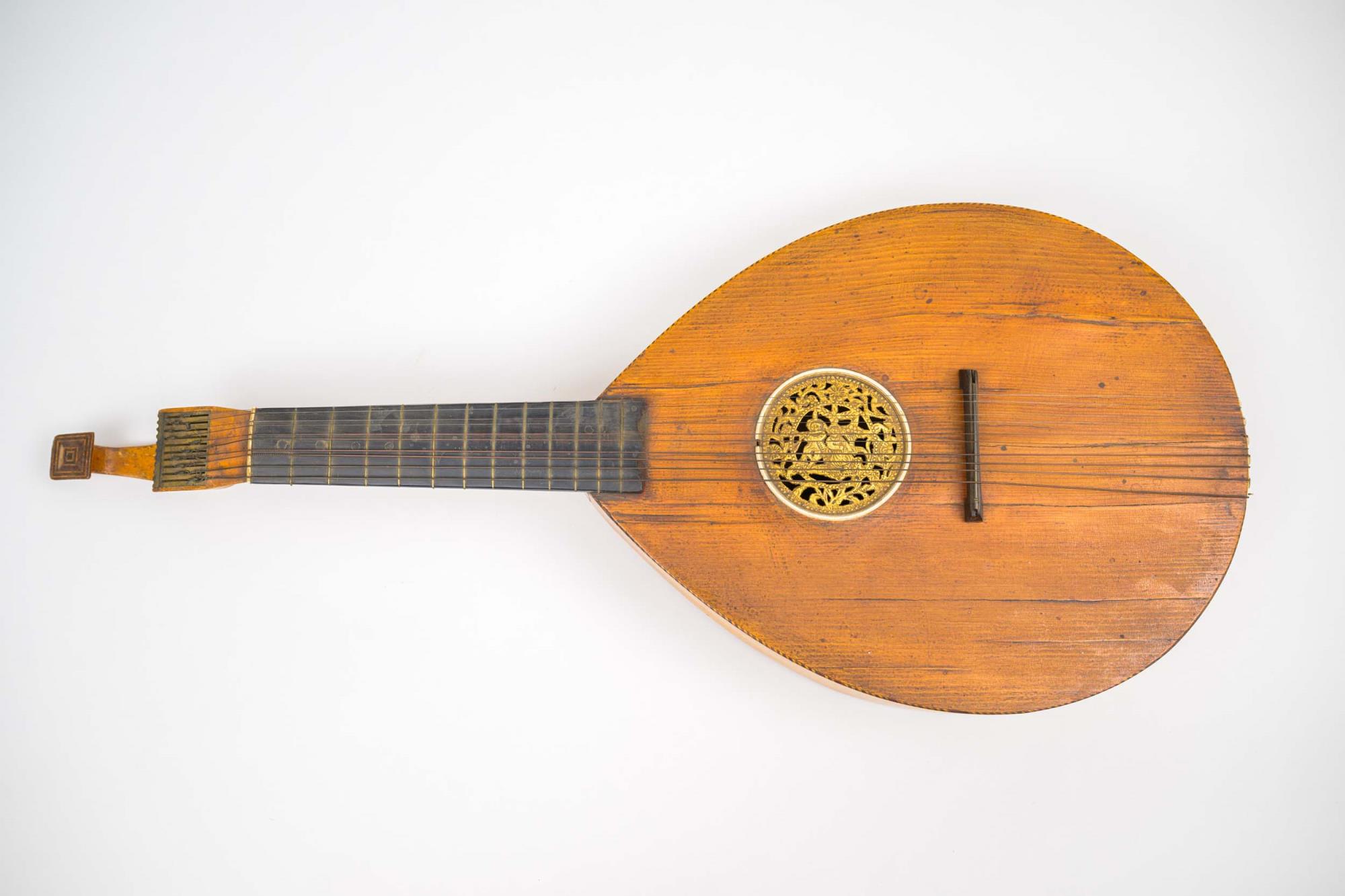English Guitar
The English guitar, or cittern, was a popular drawing-room instrument in the second half of the eighteenth century. Although it has straight sides and a generally flat back like instruments in the guitar family, it is more closely related to the lute, and its metal strings are plucked with the fingertips in the same manner.[1] Until about 1825 the term "guitar" referred almost exclusively to the English guitar, while the Spanish guitar was identified as "Spanish." The English guitar was not, however, a specifically English product. They were also made in other countries and were especially popular in France as well as in Virginia.[2]
As early as 1776, Jefferson recorded the purchase of guitar strings in Philadelphia, suggesting perhaps that his wife played the instrument.[3] When his younger daughter Maria joined him in Paris in 1787, he paid eighty-four livres for a guitar,[4] and he regularly recorded payments to the "Guitar master for Polly."[5] Maria Jefferson's guitar came to America with the rest of the family's baggage, but this English guitar appears to have been purchased by Jefferson in Virginia in 1816.[6] His granddaughter, Virginia Randolph Trist, recalled in 1839:
I had for a long time a great desire to have a guitar. A lady of our neighborhood was going to the West and wished to part with her guitar, but she asked so high a price that I never in my dreams aspired to its possession. One morning on going down to breakfast, I saw the guitar. It had been sent up by Mrs. — for us to look at, and grandpapa told me that if I would promise to learn to play on it I should have it. I never shall forget my ecstasies. I was but fourteen years old and the first wish of my heart was unexpectedly gratified.[7]
In 1824 Virginia Randolph received another guitar, possibly the guitar from Paris that Jefferson had given to his daughter Maria. In a letter to Nicholas Trist, her future husband, Virginia wrote that her father had come from Richmond and brought "a spanish Guitar," a gift from a cousin named Wayles Baker. She explained:
It belonged formerly to Aunt Maria Eppes, and she gave it to Mrs. Baker. It appears to be a very sweet toned instrument, and looks all spanish. I have practised but little on it as yet, because I have not much time for music this month. Did you ever hear a Spanish Guitar, and do you think it agreable? Perhaps it will support my voice, which is, you know, very weak, and somewhat cracked.[8]
The Spanish guitar is unlocated, but the English guitar descended in the family of Virginia Trist. The maple and pine instrument with wood inlay has watch-key tuning invented in the 1760s by John N. Preston of London.[9]
- Text from Stein, Worlds, 422
Further Sources
- Monticello Collections Database. "Guitar."
References
- ^ Alan Kendall, The World of Musical Instruments (London: Hamyln, 1972), 27; Robert Spencer and Ian Harwood, "English Guitar," in The New Grove Dictionary of Musical Instruments, ed. Stanley Sadie (London: Macmillan, 1984), 706.
- ^ John Fesperman, "English Guitar," in William Howard Adams, The Eye of Thomas Jefferson (Charlottesville: University Press of Virginia 1981), 20; Kendall, World of Musical Instruments, 27.
- ^ Jefferson, August 31, 1776, in MB, 1:423. Transcription available at Founders Online.
- ^ Jefferson, September 5, 1788, in MB, 1:714. Transcription available at Founders Online.
- ^ See, e.g., Jefferson, April 6, 1789, in MB, 1:729. Transcription available at Founders Online.
- ^ Jefferson, March 4, 1816, in MB, 2:1319. Transcription available at Founders Online.
- ^ Virginia Randolph Trist to Nicholas P. Trist, May 26, 1839, in Randall, Life, 3:351. Transcription available at Jefferson Quotes and Family Letters.
- ^ Virginia Jefferson Randolph to Nicholas P. Trist, January 9, 1824, Nicholas P. Trist Papers, University of North Carolina.
- ^ Spencer and Harwood, "English Guitar," in Dictionary of Musical Instruments, 706.

